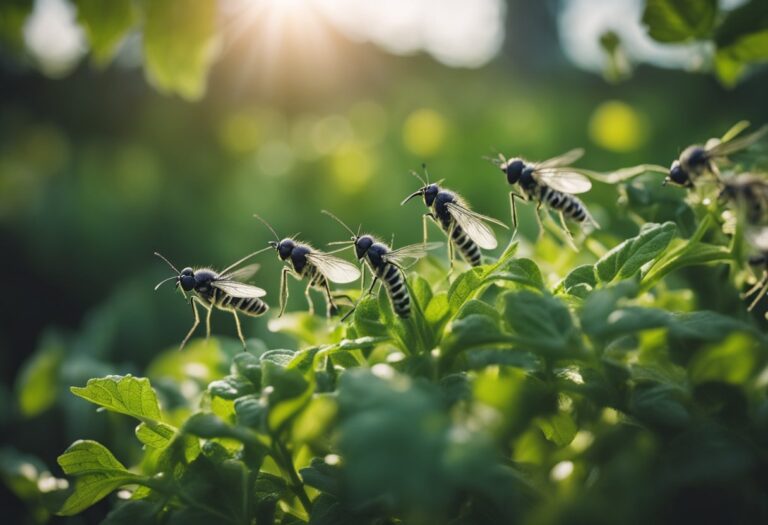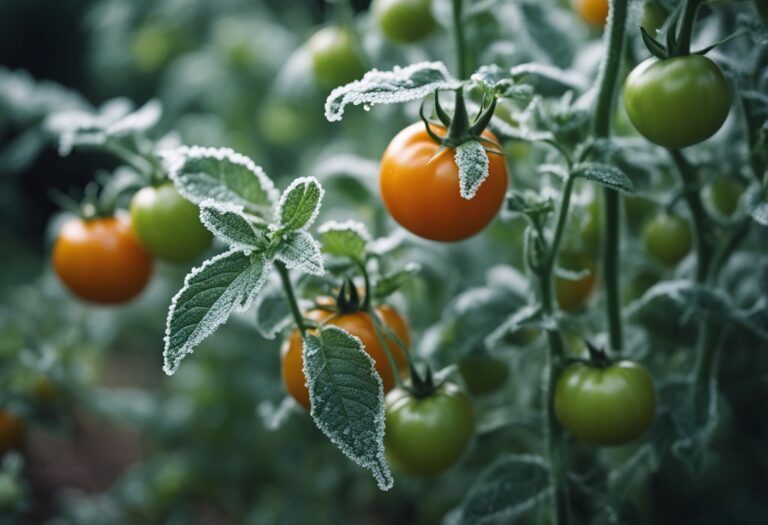Do Birds Eat Tomatoes? A Friendly Guide to Feeding Your Feathered Friends
If you’re a gardener, you may be wondering whether birds eat tomatoes. The answer is yes, many bird species will eat tomatoes, particularly ripe and soft ones. Some birds, such as robins, thrushes, and mockingbirds, may peck at or even consume tomatoes in your garden. However, there are ways to protect your tomato plants from birds and encourage a bird-friendly environment in your garden.
Protecting your tomato plants from birds is essential if you want to enjoy a bountiful harvest. Fortunately, there are several simple ways to deter birds from your plants. Some methods include using bird netting, creating a scarecrow, or using reflective tape. You can also plant companion plants that attract birds away from your tomato plants.
Encouraging a bird-friendly environment in your garden is also important. Birds are beneficial to your garden because they help control pests and pollinate flowers. You can attract birds to your garden by providing food, water, and shelter. Adding bird feeders, bird baths, and nesting boxes to your garden can help create a welcoming environment for birds.
Key Takeaways
- Birds will eat ripe and soft tomatoes.
- Protecting tomato plants from birds is essential.
- Encouraging a bird-friendly environment in your garden is important.
Birds and Tomatoes
If you’re a gardener, you may have noticed that birds love to eat ripe tomatoes. Fortunately, there are ways to keep them off your plants. Here are some things you should know about birds and tomatoes.
Common Bird Species That Eat Tomatoes
Many bird species will eat tomatoes, but some are more likely to do so than others. For example, robins, thrushes, and mockingbirds may peck at or even consume tomatoes in your garden [1].
If you have a bird feeder in your yard, you may also attract fruit-eating birds like finches and grosbeaks.
Reasons Birds Are Attracted to Tomatoes
Birds are attracted to tomatoes for a few reasons. First, tomatoes are a source of food and hydration for birds. Second, the bright colors of ripe tomatoes can be very attractive to birds, especially if they are looking for food to feed their young [2]. Finally, birds may be attracted to the insects that are attracted to tomato plants.
Impact of Birds on Tomato Gardens
While birds can be a nuisance to gardeners, they can also be beneficial. For example, birds can help control insect populations in your garden [3].
However, if birds are eating too many of your tomatoes, you may want to take steps to deter them. Some simple ways to keep birds off your tomato plants include using bird netting, hanging shiny objects like CDs or aluminum foil, or using bird scare devices like fake owls or snakes [1].
Remember, birds are an important part of our ecosystem, so it’s important to find ways to coexist with them in your garden.
Protecting Tomato Plants from Birds
If you’re a gardener, you know that birds can be a major problem when it comes to growing tomatoes. They love the taste of ripe tomatoes, and will often peck at them, leaving them damaged or ruined. Fortunately, there are several ways to protect your tomato plants from birds.
Physical Barriers and Deterrents
One of the most effective ways to keep birds away from your tomatoes is to use physical barriers and deterrents. This can include things like bird netting, scare tape, and shiny objects like CDs or aluminum foil. Bird netting is a fine mesh that can be draped over your tomato plants to keep birds from landing on them.
Scare tape is a reflective tape that can be hung near your tomato plants to scare birds away. Shiny objects like CDs or aluminum foil can be hung near your tomato plants to create a distracting glare that will keep birds away.
Natural Predators and Decoys
Another way to keep birds away from your tomatoes is to use natural predators and decoys. This can include things like fake owls or hawks, which can be placed near your tomato plants to scare birds away.
You can also attract natural predators like hawks or falcons to your garden by providing them with a nearby source of food, such as a bird feeder or bird bath.
Gardening Practices to Discourage Birds
Finally, there are several gardening practices you can use to discourage birds from eating your tomatoes. One of the simplest is to plant your tomatoes in a different location each year. This will make it harder for birds to find them.
You can also try planting other crops that birds don’t like, such as peppers or onions, near your tomatoes. Additionally, you can try planting your tomatoes in a raised bed or container, which will make it harder for birds to reach them.
Encouraging a Bird-Friendly Environment
If you enjoy having birds around your garden, there are ways to encourage them to stay without sacrificing your tomato plants. Here are some tips to create a bird-friendly environment:
Alternative Food Sources for Birds
One way to keep birds away from your tomato plants is to provide them with alternative food sources. You can hang bird feeders in your garden or place them on a nearby tree.
Fill them with seeds or fruits that birds like, such as sunflower seeds, millet, or chopped apples. This way, birds will have a source of food that is more attractive than your tomato plants.
Creating Safe Spaces for Birds Away from Tomato Plants
Another way to encourage birds to stay in your garden is to create safe spaces for them away from your tomato plants. You can do this by planting shrubs or trees that provide shelter and nesting sites for birds.
You can also add birdhouses or nesting boxes to your garden. These structures provide birds with a safe place to build their nests and raise their young. By creating a bird-friendly environment, you will not only keep birds away from your tomato plants, but you will also help to support the local bird population.
Remember that birds are an important part of the ecosystem and play a vital role in pollination and pest control. By providing them with a safe and welcoming environment, you will be doing your part to support the environment and create a beautiful garden for you and your feathered friends to enjoy.
Frequently Asked Questions
How can I protect my tomato plants from birds?
You can protect your tomato plants from birds by using physical barriers such as bird netting, floating row covers, or scare devices like reflective tape or fake owls.
You can also try planting companion plants that birds don’t like, such as marigolds or garlic. Additionally, planting your tomatoes in raised garden beds or containers can make it more difficult for birds to access them.
Is it safe for birds to eat tomato seeds?
Yes, it is safe for birds to eat tomato seeds. According to Learn Bird Watching, birds have diverse diets and can consume a wide range of foods. While tomatoes are generally safe for humans, certain factors may affect their suitability for birds. However, tomato seeds are not harmful to birds.
What can I do to prevent birds from eating my cherry tomatoes?
To prevent birds from eating your cherry tomatoes, you can use the same methods as for protecting larger tomatoes, such as bird netting, scare devices, or planting companion plants.
Additionally, you can try picking your cherry tomatoes as soon as they ripen and before the birds have a chance to eat them.
Why do birds target my tomato plants?
Birds target tomato plants during the fruiting stage, once tomatoes begin to ripen. For the birds in your garden, ripe tomatoes are a good source of food and also a water source, especially at the height of summer when water is scarce. Additionally, birds may be attracted to the bright colors of ripe tomatoes.
Are tomato leaves harmful to birds if ingested?
According to Wild Bird Scoop, tomato leaves contain solanine, which is toxic to some animals, including birds.
However, the concentration of solanine in tomato leaves is generally too low to cause harm to birds, and they are unlikely to eat the leaves anyway.
Which types of birds are known to eat tomatoes in gardens?
Several bird species are known to eat tomatoes, including mockingbirds, cardinals, and blue jays. These birds are particularly drawn to ripe tomatoes and can be quite persistent in their quest to enjoy them. However, many other bird species may also eat tomatoes if given the opportunity.


